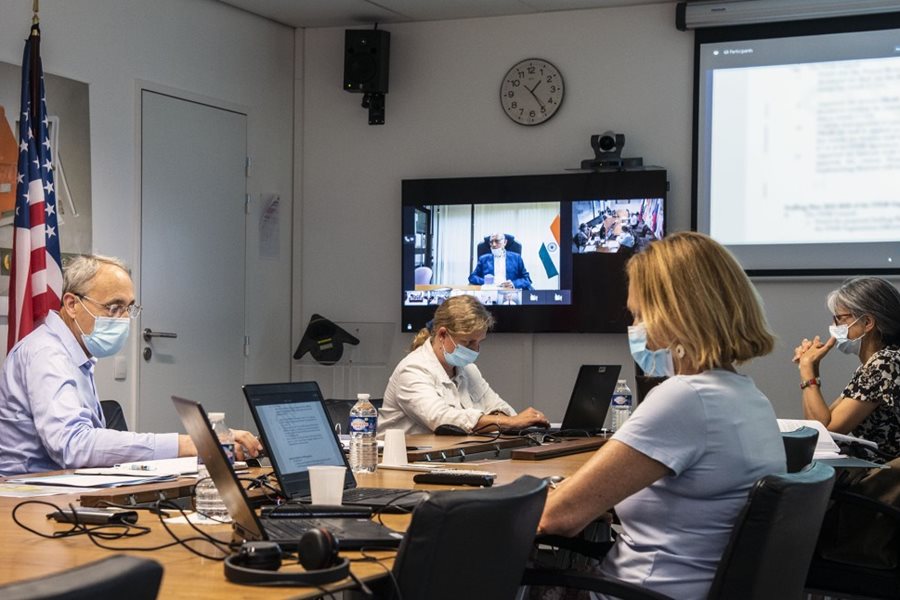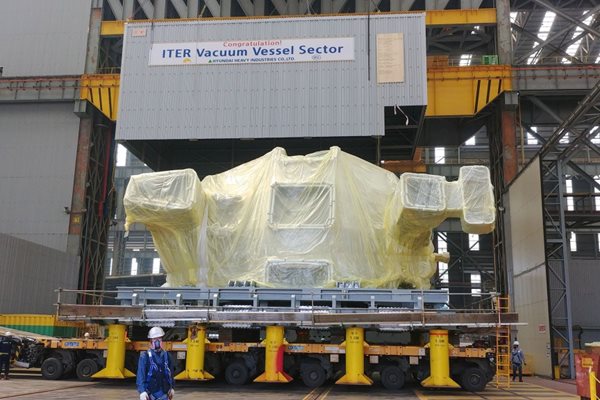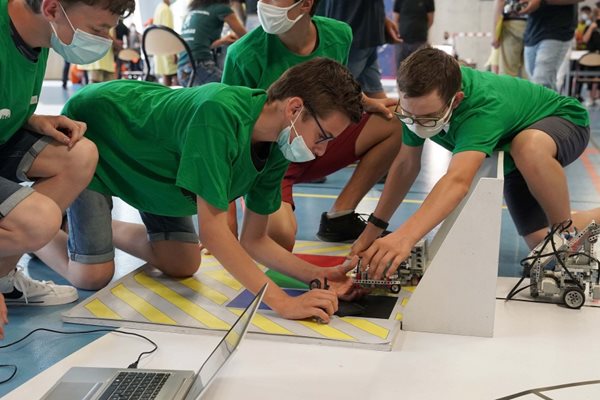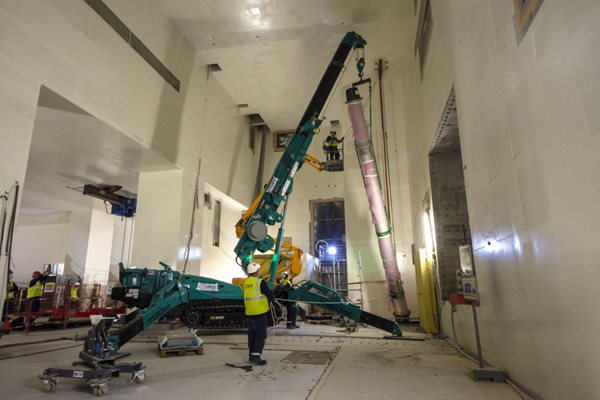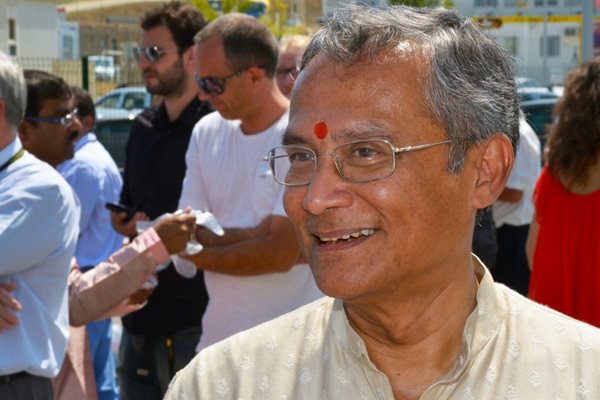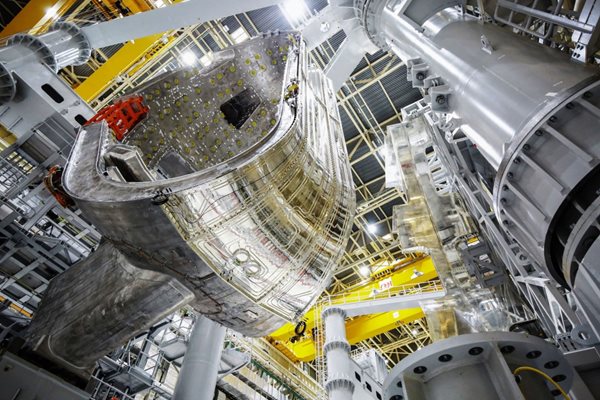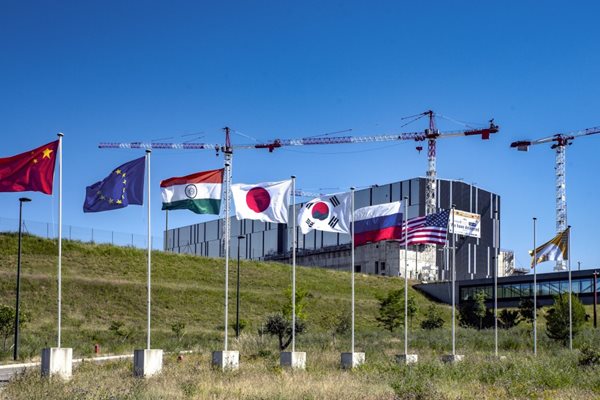
you're currently reading the news digest published from 15 Jun 2021 to 21 Jun 2021
featured6
of-interest1
press24
featured
28th ITER Council | Progress despite challenging times
The ITER Council meets for two statuatory meetings every year, traditionally in June and November. Its role, as established by the ITER Agreement, is to be responsible "for the promotion, overall direction and supervision of the activities of the ITER Organization in pursuit of its purpose." (Article 6) During its Twenty-Eighth Meeting on 16 and 17 June 2021, the Council evaluated performance reports on construction, manufacturing, and assembly, including the impact of the COVID-19 pandemic. Approximately 100 senior representatives and experts from the seven ITER Members and the ITER Organization participated in the two-day meeting, which was chaired by LUO Delong from China. Project achievements have been numerous and consequential since the ITER Council last met in November 2020. The first ITER magnet has been inserted into the Tokamak assembly pit; eight other completed magnets (seven toroidal field coils and one poloidal field coil) are stored on site; the first central solenoid module is ready for shipment; work has started to create the first vacuum vessel sub-assembly; welding is underway on the last part of the ITER cryostat; and manufacturing abroad and installation and assembly works on site are all progressing at a sustained pace. However, the effects of some technical challenges and the ongoing pandemic are requiring close monitoring, and will be further assessed after due consideration of all possible mitigation measures to prevent any delays that could impact the schedule for the achievement of First Plasma. The Council is requesting the ITER Organization and its collaboration partners to take all possible measures to ensure Fusion Power Operation in 2035 as currently planned. Read the full press release in English and in French.
Vacuum vessel | Second "jewel" to leave Korea
A second 40-degree sector of the ITER vacuum vessel is about to leave the Hyundai Heavy Industries manufacturing facility in Ulsan, Korea, for shipment to ITER. Protectively wrapped and inserted inserted into generous metal housing, vacuum vessel sector #7 will leave the factory this week for transfer to Mipo Port, Ulsan. The ocean voyage to Fos-sur-Mer, France, will require approximately one month. Sector #7 is the second 440-tonne vacuum vessel sector procured by Korea; two others are in an advanced stage of fabrication (95% and 88% completed) at Hyundai Heavy Industries. With each realization, the lessons learned serve to ease the industrial steps (including final assembly and welding, achievement of tolerances, PAUT examination, and packing) for the remaining sectors. Lessons learned in the shipment of the first sector last year, for example, led to a certain number of improvements to the cabin-like packing crate including an increase in crate size (to avoid clashes as the component is removed) and an easier-to-remove cover. Sectors #6 and #7 will be the first lowered into the Tokamak pit at ITER and welded together. (See this recent article on vacuum vessel in-pit welding.) One by one, the jewels in ITER's nine-spoke crown are arriving.
ITER Robots | The experts of tomorrow
Robotics is at the heart of every major industrial project. In ITER, the operation of mobile automated systems will play a key role in assembling machine components in the restricted environment of the assembly pit, in maintaining the installation once operations have started, and in dismantling it at the end of its life cycle. The same will be true, but on a massive scale, for the fusion industry of the future. As a consequence, scores of experts will be needed to design, manufacture and operate the robotic systems that will make fusion possible. Chances are that a few of these future experts were present on 15 June for the grand finale of the ITER Robots competition, whose 10th edition was held this year at Collège Louis-Philibert in Le Puy-Sainte-Réparade, a village located some 30 kilometres west of the ITER site. Organised by Agence Iter France (CEA) in partnership with the local representatives of the French Ministry of National Education, ITER Robots brings together junior and high school students (18 teams for a total of 300 students this year) in a friendly competition that mimics some of the challenges of handling actual ITER components. Under their professor's guidance, students spend months designing and programming Lego-based robots and 'training' them to perform specific tasks in and around a mockup of the ITER Tokamak. Their performance is assessed by a jury of actual robotics experts from ITER and CEA's Institute for Magnetic Fusion Research (IRFM). 'Watching you perform today didn't feel much different than observing the ITER teams presently involved in the machine assembly phase. It was the same concentration, the same coordination, the same attention to the smallest detail,' said Alain Bécoulet, Head of the ITER Engineering Domain (representing ITER Director-General Bernard Bigot), in his address to the participants. At a reduced scale, participation in ITER Robots is about measuring the challenges of handling ITER components remotely. At real-scale, it is a demonstration of the importance of teamwork and shared responsibility.
Cryoline network | Now the vertical spools
At the L3 level of the Tokamak Building, ceiling height in some galleries exceeds 10 metres. But when it comes to lifting a cryoline spool, tilting it 90 degrees and inserting it into a vertical shaft that connects to lower levels, this headroom turns out to be barely sufficient. The cryolines form a five-kilometre network of sophisticated piping that originates in the ITER cryoplant before crossing over a bridge to the Tokamak Complex to distribute cooling fluids to the Tokamak's components and systems. The better part of the network ends up in the basement of the building (B2 level), where it branches out in two directions: laterally towards the magnet feeders and up overhead through vertical shafts to the auxiliary cold boxes located at L3 level. Cryoline installation at the B2 level, which began in September 2019, is now complete. On Tuesday 16 June, the first spool of the vertical 'lines' connecting to the L3 level was successfully inserted into the south shaft. The south shaft will accommodate two lines; at the opposite end of the gallery, the north shaft will accommodate five. All will connect to the auxiliary cold boxes that will be installed in 2022. When everything is in place, the system will be able to feed a constant flow of cooling fluids to the different 'clients' inside the machine: 25 tonnes of supercritical helium at 4 K (minus 269 °C) to 10,000 tonnes of superconducting magnets plus cryopumps, and gaseous helium at 80 K (minus 193 °C) to the thermal shield.
In memoriam | Dhiraj Bora, leading contributor to fusion and ITER
The ITER community was greatly saddened to learn of the passing of Dhiraj Bora, a well-known expert in plasma physics and tireless proponent of the ITER Project. Professor Bora was a leading figure in fusion research in India and a well-respected member of the international fusion community, with former colleagues and friends across three continents. A specialist in radio frequency heating and current drive in tokamaks, he was affiliated for the better part of his career with the Institute for Plasma Research (IPR) in Gandhinagar, a premier scientific research institute under the Department of Atomic Energy, Government of India. He was project leader for the radio frequency group at that institute since its inception, developing high-power, megawatt-level heating and current drive systems. From 2007 to 2012, he was Deputy Director-General (DDG) and Director of the CODAC, Heating & Diagnostics Directorate at the ITER Organization. During his time at ITER, many of the systems were in the design and early procurement phases, a process that culminated with the transfer of full technical specifications to the procuring Domestic Agencies through Procurement Arrangements. He was also closely involved in the planning for the ITER Neutral Beam Test Facility (NBTF), a test bed for the components and technologies of the neutral beam heating system. In late 2012, after five years at the ITER Organization, he returned to India to become Director General of the Institute for Plasma Research, taking over from founding director Predhiman Krishan Kaw. He served in this capacity from 2013 to 2016, overseeing the first plasma of the Steady State Tokamak fusion reactor SST-1. He also remained closely involved with the ITER Project, attending the ITER Council as representative from India throughout the duration of his term as IPR Director General. More recently, Professor Bora was the Vice Chancellor of the Assam Science and Technology University, ASTU. Professor Bora passed away in Ahmedabad, India, on Saturday 19 June. The Times of India published this obituary.
Thermal shield portfolio | All shine and precision
A cluster of polished metal and silver catches the eye at the far end of the Assembly Hall, as thermal shield panels join vacuum vessel #6 inside the arms of a tall assembly tool. First there was a 440-tonne vacuum vessel sector, raised to vertical and inserted into the central "V" of the sector sub-assembly tool closest to the Tokamak pit (SSAT-2). Then came the inboard panel of thermal shielding designed and built for sector #6. The inboard panel was attached to the right wing of the tool in February 2021, and rotated in towards the vertical sector in April. It has since been attached firmly with 16 clamps, married so closely to the shape of the sector that only its polished silver surface distinguishes it from the duller grey of the steel sector. And now, two outboard thermal shield sections have been posiitoned on the wings of SSAT-2 for rotation and alignment. The operation was rehearsed earlier this year; when finished in July, vacuum vessel sector #6 will be fully cloaked in a thermal barrier that will prevent the transfer of heat from the vessel to the ultra-cold superconducting magnets. To complete the first sector sub-assembly, two toroidal field coils must be positioned and attached. While the assembly teams work to complete the inboard and outboard assembly of the thermal shield, toroidal field coil #12 (TF12) has been positioned temporarily on the adjacent sector sub-assembly tool. Special thanks to Chang Hyun Noh, Thermal Shield Manufacturing Engineer, for the photo coverage.
of-interest
ITER's history of diplomacy
An article published in History and Technology on 1 June 2021 explores ITER's history of diplomatic negotiations. A project of such magnitude, author Anna Åberg points out, requires collaboration and compromise as people from vastly different backgrounds come together to create a complex machine. 'This is true not only for the top-level politicians,' Åberg writes, '[but also] all the way down to the work site itself where German welders may work under Indian supervision following French nuclear-safety protocols.' Collaboration within ITER has changed over time as the project becomes more complex and participants face a variety of new challenges. The realization of the ITER machine is only possible when everyone is willing to compromise and come together to solve evolving issues. Read the original article here.
